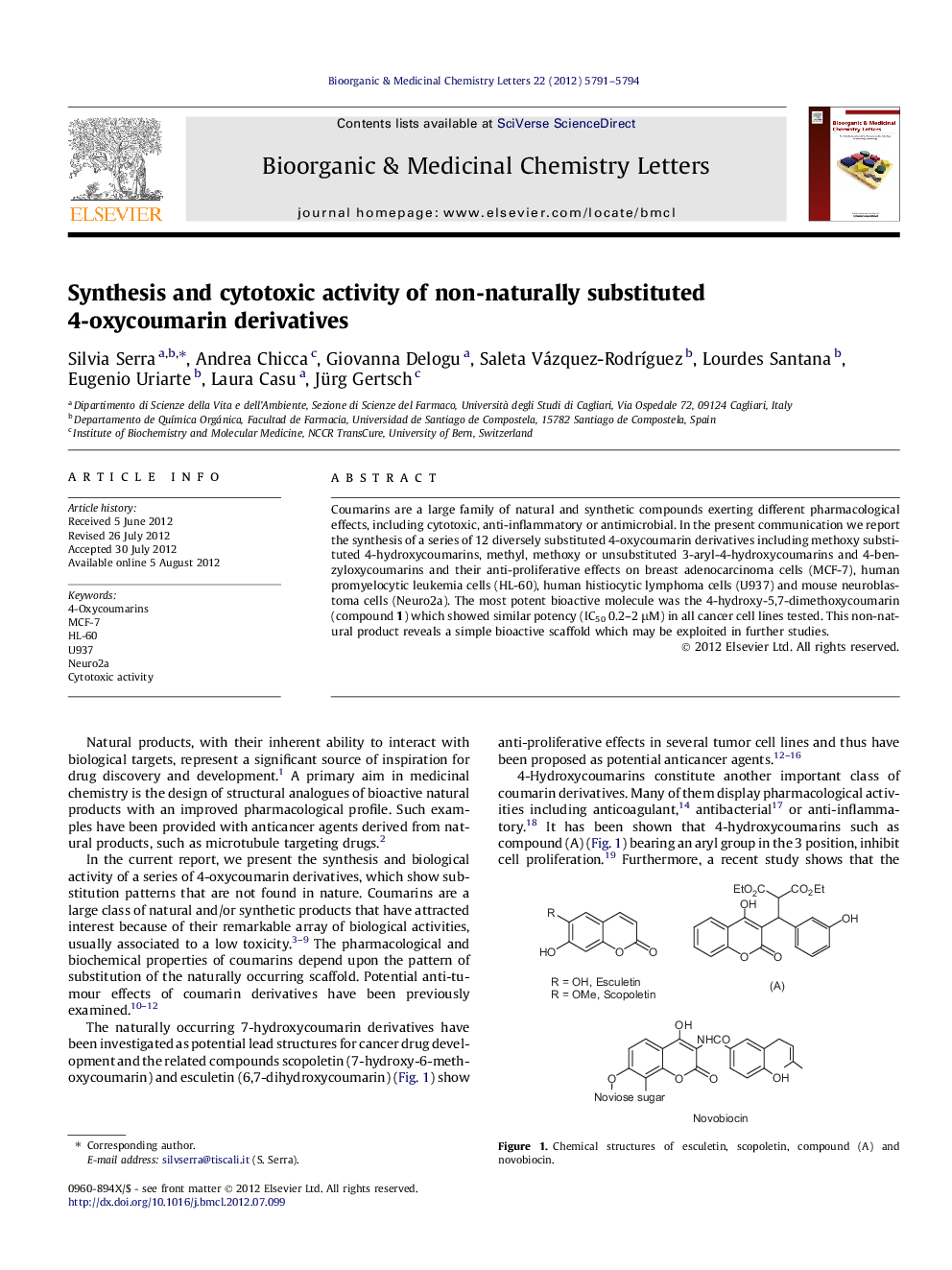| Article ID | Journal | Published Year | Pages | File Type |
|---|---|---|---|---|
| 10588139 | Bioorganic & Medicinal Chemistry Letters | 2012 | 4 Pages |
Abstract
From a series of 12 synthesized diversely substituted 4-oxycoumarin derivatives the most potent bioactive molecule as anti-proliferative on breast adenocarcinoma cells (MCF-7), human promyelocytic leukemia cells (HL-60), human histiocytic lymphoma cells (U937) and mouse neuroblastoms cells (Neuro2a) was the 4-hydroxy-5,7-dimethoxycoumarin (compound 1). It showed similar potency in all cancer cell lines tested, with IC50 = 0.2-2 μM, higher than tamoxifen (IC50 = 8-14 μM) and coumarin (IC50 = >50 μM) used as positive controls. Intriguingly its structural isomer, compound 2, in which only one methoxy group is changed from 5 to 8 position, is not active in MCF-7 cells, while it is weakly active in HL-60, U937 and Neuro2a cells.
Related Topics
Physical Sciences and Engineering
Chemistry
Organic Chemistry
Authors
Silvia Serra, Andrea Chicca, Giovanna Delogu, Saleta Vázquez-RodrÃguez, Lourdes Santana, Eugenio Uriarte, Laura Casu, Jürg Gertsch,
